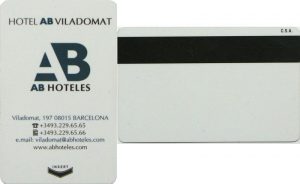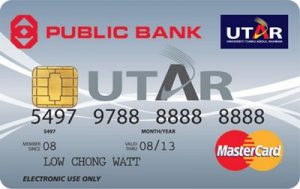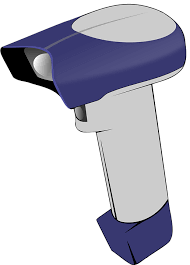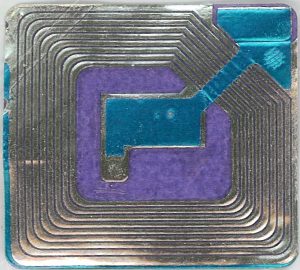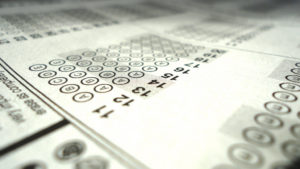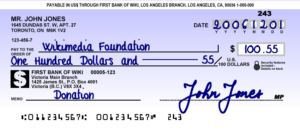Introduction
What are direct data entry devices?
Direct data entry devices are specific purpose devices designed to automate or speed up the entry of data in to the system by minimising human data entry. They have a wide range of uses including in education, retail and in business. They consist of either specialist hardware, software ( or both) and come in a number of different forms.
Advantages
- Faster data entry
- More accurate data entry
Disadvantages
- If hardware / software is faulty large numbers of errors will be made.
- Expensive set-up costs to buy the hardware / software
- Can only be used for their specific purpose
MSR
Magnetic Stripe Readers
YouTube Blocked? Use the Google Drive Version Instead
Magnetic stripe reader technology is made up to two components:
Plastic (or paper) cards with a magnetic storage strip
Magnetic card reader/writer
Data is written to the card by magnetically polarising the surface of the card. The combination of positive and negative polarisation represents the binary digits of ones and zeros.
Advantages
- Cheaper to issue/replace than traditional door keys for hotels.
Disadvantages
- High setup costs for some installations (door security)
- Cards can be easily cloned, making them insecure.
Chip & Pin
Chip and Pin Readers
As credit and room card cloning became increasingly popular, businesses looked to a more secure technology MSR. Chip and Pin technology was developed to make transactions more secure.
The new technology has a similar format to magnetic stripe readers, with:
- A card with a microchip placed directly on it.
- A reader than reads the chip.
The use of a secure chip meant that the cardholder’s card could be used not just to contain the bank details of the client, but could also be used to verify the PIN code entered. This is more secure than MSR technology that required the user to write their signature to verify the transaction.
Advantages
- The addition of a PIN adds far better security than MSR
- The card would not be ‘wiped’ by strong magnetic fields.
Disadvantages
- High setup costs for the new hardware
Barcode
Barcode Readers
With the rapid growth of the supermarkets in the 1970s and 1980s came a need for a system to speed up the processing of sales at the checkout, as well as accurate stock control.
From this demand was developed barcode technology.
This technology originally consisted of :
- A barcode scanner
- A printed barcode, locate on a product.
When the product was scanned, the vertical black and white bars were converted in a decimal number, and this number was used as the product code.
This meant that shops could accurate input the:
- Price of the product, meaning the sale price was correct
- The product ID, meaning that the sale could be automatically passed to the stock control database and stock levels could be updated automatically
Advantages
Stock levels can be updated automatically, making stock control easier
Very cheap for each label, as it was just printed on the side of the product label
Disadvantages
- Limitations on 2D barcodes mean that individual products can’t be tracked, only product types.
- Doesn’t help track the product for security purposes
RFID
Radio Frequency ID Tags
Tracking stock within retail or warehouse setting has always been a difficult, time-consuming and expensive task. Businesses have long looked to automate stock checking and tracking, and RFID tags are the first serious attempt to do so.
RFID tags are small tags that can be directly attached to a product and when a reader passes within a certain proximity of the tag, the reader can read the contents of the tag.
The tag itself can contain:
- General Product information, such as it’s name and manufacturer.
- Specific item information, such as its’ unique ID or it’s sell by date.
This means that a human ( or robot) can pass by close to stock and the stock information can be automatically read.
Advantages
- Faster than processing a barcode as don’t have find the tag, just be near it.
- Can also be used as a security device, so set’s off an alarm if too close to a sensor.
Disadvantages
- Higher set-up costs than barcode readers
- Higher individual unit cost for the tags than a barcode reader
NFC
Near Field Communication (NFC)
NFC is a system of very short range (up to 10cm) radio communication that requires two way communication.
Common uses
- Contactless payment in shops
- Contactless travel cards and access cards
Advantages
- Most modern smartphones are fitted with NFC technology so it is widely compatible.
- It’s incredibly convenient and more robust that chip and pin / magnetic stripe.
Disadvantages
- If there are multiple NFC devices very close together (e.g. in your wallet) then they can interfere with the signals
- If someone knows your phone password and can get access to your phone they can buy things using your phone
OMR
Optical Mark Recognition
Optical mark recognition uses a combination of:
- A pre-formatted document that has been filled in by the user
- A camera / scanner to read the document
Advantages
- Can process large amounts of user input quickly
- More accurate and cheaper than human marking
Disadvantages
- Limited to multiple choice style questions
OCR
Optical Character Recognition
The limitations of OMR led to the development of OCR technology. This technology is designed to read written or typed input and convert it in to an electronic format.
Advantages
- More flexible than OMR, can be used on an question type
- Excellent from converting old printed books that no electronic of exists
- Can be used together with automatic translation technology to translate printed documents  near-instantly.
Disadvantages
- Not always very accurate – especially with hand-written text
MICR
Magnetic Ink Character Recognition
*** MICR is mainly used with Cheques and this is the only use for it you will need to know in the exam ***
When cheques are being printed, the account holder’s name, sort-code and bank account number is printed on to the cheque using a special magnetic ink. These magnetic ink details are read by a machine when the cheque is processed, meaning incorrect account details are rarely entered.
Advantages
- Very accurate due to the technology used
- Difficult to copy / edit so very secure technology
- Fast processing times in the bank
Disadvantages
- High setup costs
- Because cheques can be received from different banks, it requires all banks adopt the system in order for it to be effective
